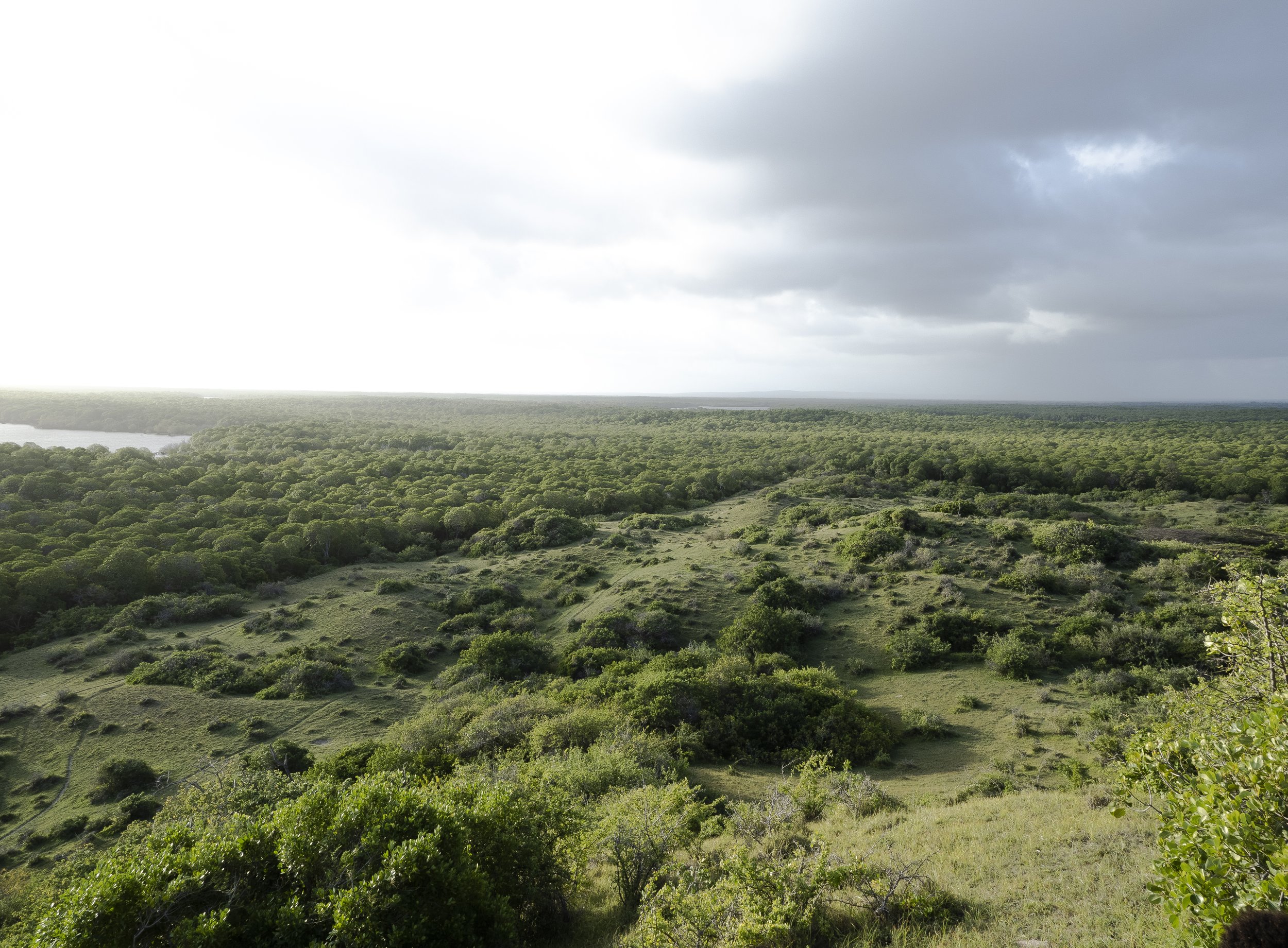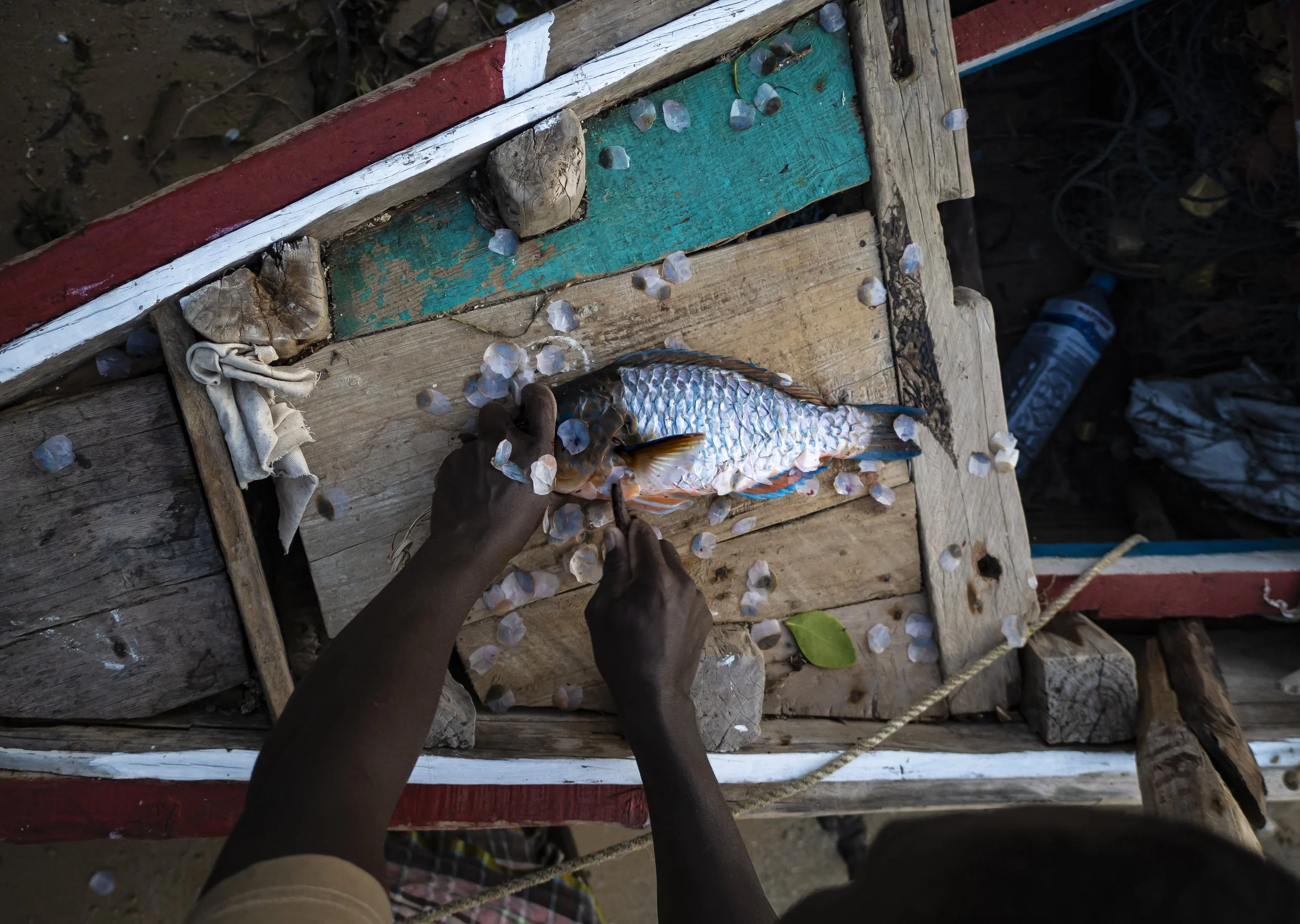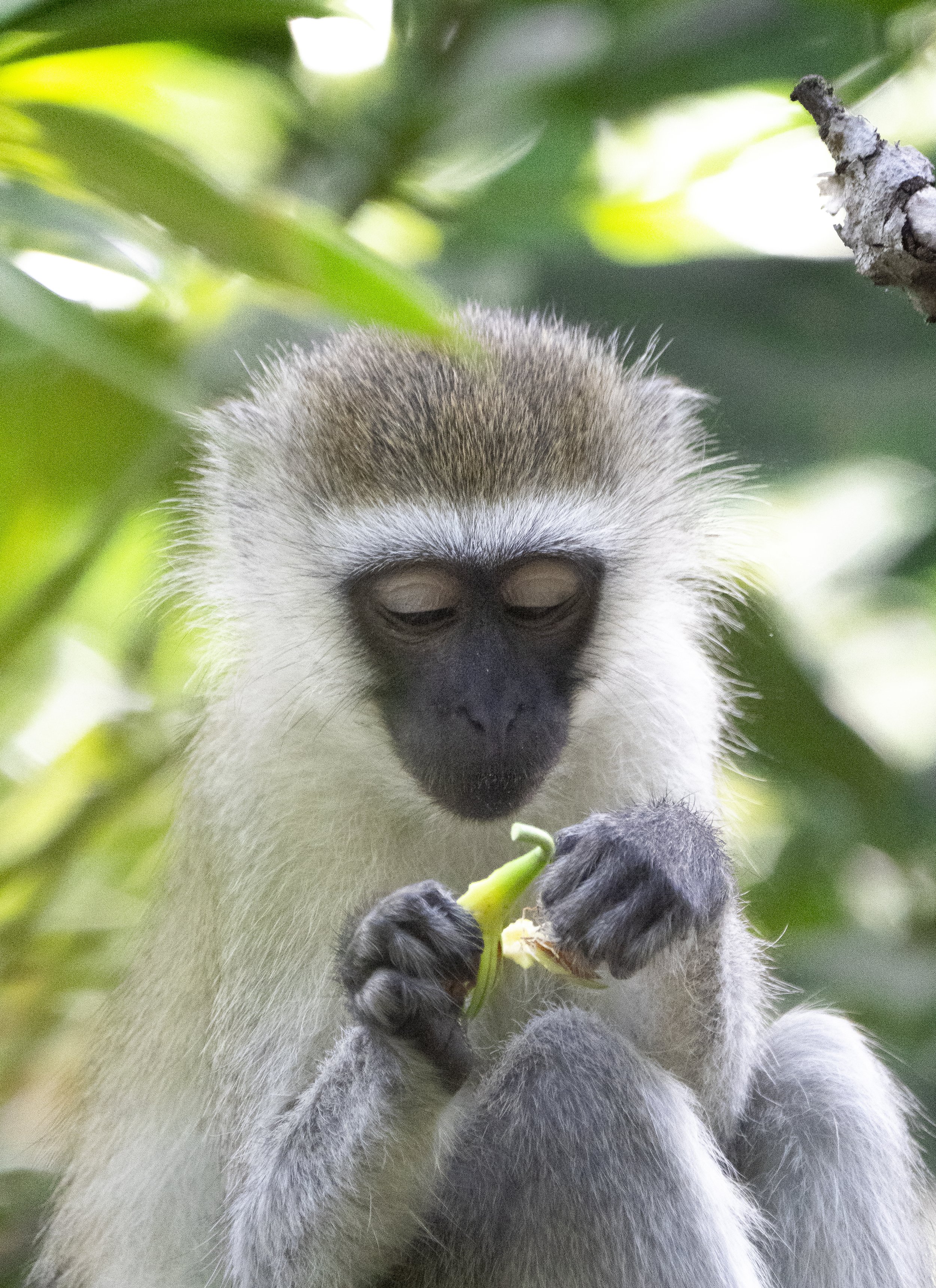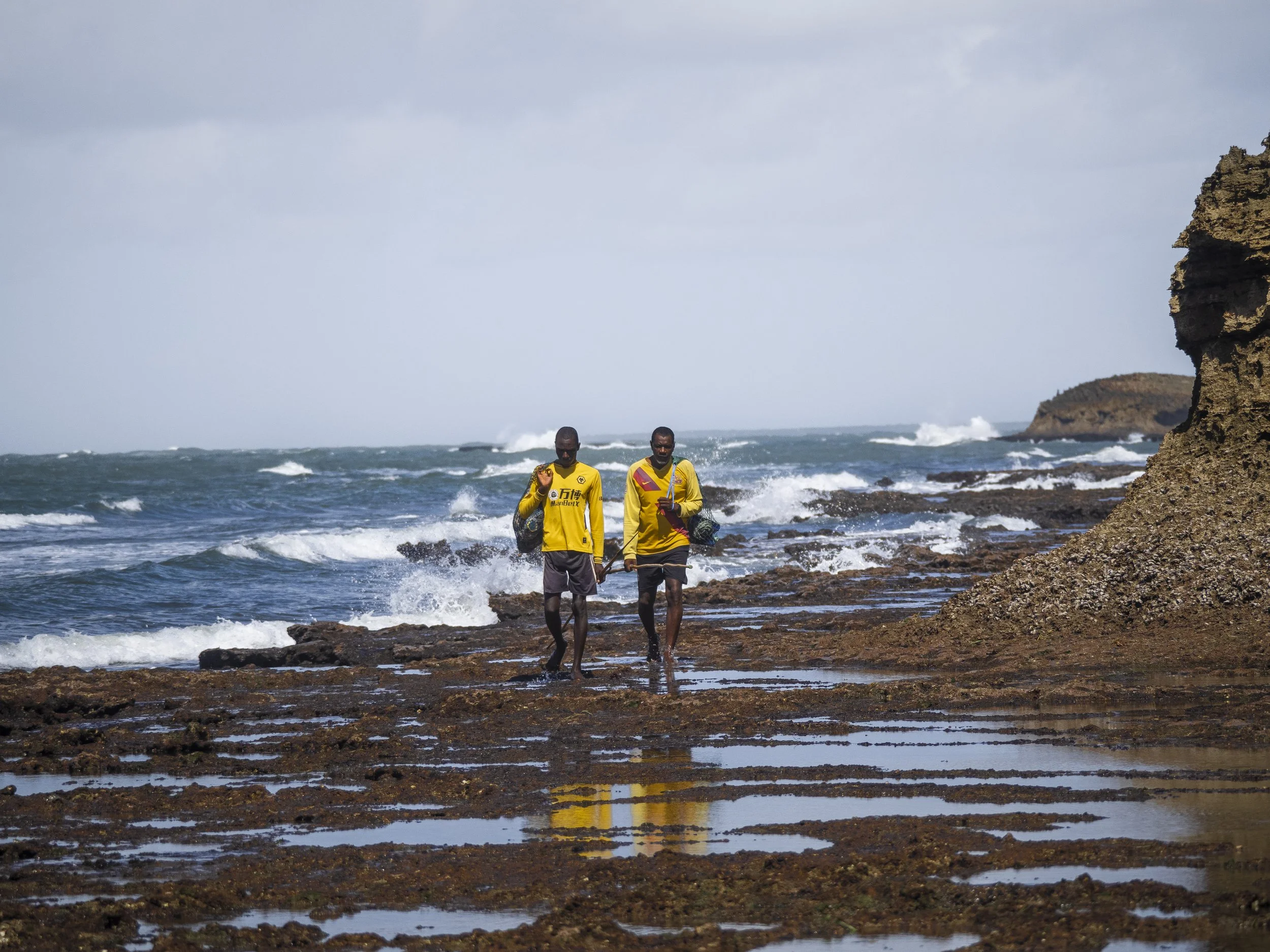Lamu: A fishing paradise
Panoramic views of extensive eastern mangrove forests stretch across from Kiwayu, a barrier island, to the mainland of Lamu. © Alex J Chege
I spent June to August this year visiting my research site located in the northern portion of the Lamu Archipelago in Kenya. The western part of the Indian Ocean is highly productive, and the impressive diversity of marine life in this region has led to the creation of numerous marine protected areas dotting the coasts of Eastern Africa and stretching from Mozambique to Zanzibar, Kenya, to the far-reaching corners of Somalia.
My friend Yunus uses a dhow, a traditional Swahili sailing boat, as a workbench while he demonstrates how to descale a parrotfish when there are no tools around. © Alex J Chege
Lamu, a town steeped in Swahili tradition and a UNESCO world heritage site is the oldest East African settlement with a nearly 700-year-old history as a cultural hub for trade and maritime activity. Off the beaten path, there are even more remote areas such as Kiwayu island, a near 3-hour speed boat from Lamu, where I did my pilot research. Kiwayu is one of few Swahili settlements located in the Kiunga Marine Reserve, making this a snorkeling and fishing paradise for the inhabitants and visitors to this part of the world. The numerous pristine islands and off shore reefs make this place a refuge for marine and terrestrial wildlife including nesting sites for five species of threatened sea turtle, dugongs, and a unique population of Vervet monkeys (Chlorocebus pygerythrus) that routinely fish for shellfish along Kiwayu’s shores.
The African vervet monkey (Chlorocebus pygerythrus)
© Alex J Chege
Like us humans, vervet monkeys are generalist feeders, meaning they utilize a wide range of nutritional sources and incorporate a variety of food items into their diet. This high-diversity dietary strategy, also typical of other Cercopithecines (Old World Monkeys) such as baboons and macaques enables them to survive in diverse habitats. This allowed them to expand their range geographically throughout Africa, most of Asia, and in the past, Europe. However, what makes these nonhuman primates capable of living in coastal environments has rarely ever been studied.
My Ph.D. research explores the general question; what makes these vervets (and humans for that matter) capable of exploiting coastal environments? And central to this is understanding the behavioural adjustments nonhuman primates make to endure dynamic coastal environments. To give an example, rising tides create barriers to movement for vervets, fishermen, and for myself; attempting to wade between islands while holding binoculars and a notebook above my head. While receding tides expose new foraging opportunities in intertidal zones, with a greater abundance of easily accessible marine foods. The vervets of Kiwayu appear to take advantage of this and use this time to search, capture and feed on any clueless crabs wandering about. This behaviour appears to be learned as we watched juvenile vervets sitting on the sidelines watching the more experienced ones go first.
A female vervet monkey ventures from the mangroves on to exposed coral during low tide to feast on a Horned Ghost Crab (Ocypode ceratophthalmus) , Lamu 2022
Many inhabitants of Kiwayu, and its neighboring islands report that this crab-eating tradition of vervet (and sometimes baboon) populations have been seen for over 30 years. And with a local selection of over 20 crab species to choose from, it’s no wonder this vervet population appears to have a developed taste for it. Seemingly showing a preference for at least three different crab species.
Visiting Lamu this time around revealed some other very interesting insights. The rough waves during this monsoon season (May-July) made it impossible for fishermen to safely fish beyond the island’s reefs, yet numerous kinds of seafood did make their way onto our plates. This season, I was lucky enough to try 11 different seafood items including fish, octopus, and of course crabs, all found within the surrounding areas of the island. I think for humans and nonhuman primates it appears that our cultures and behaviors are deeply rooted in the environments we inhabit.
Kizningitini lobster trappers, Lamu 2022.




